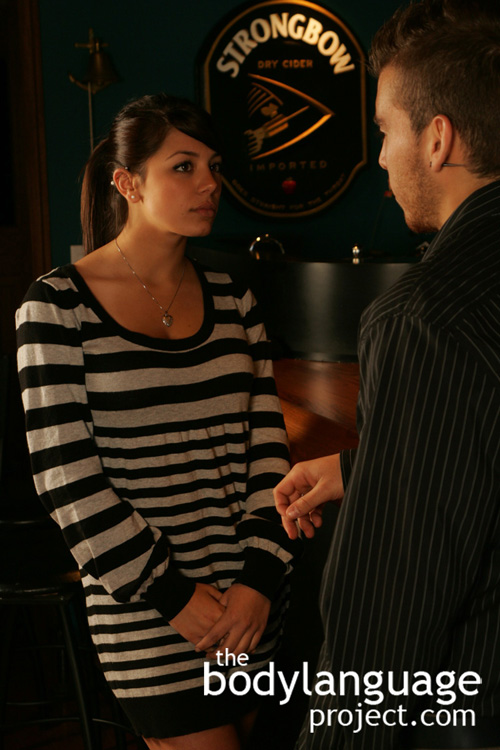A 2006 study by Stirling University psychologists found that children who were instructed to avoid eye contact while considering their response to a question had a seventy-two percent chance of answering correctly but only a fifty percent chance of answered correctly when they had not been told to look away. One of the theories advanced to explain this finding suggests that looking at human faces, which are complex and information rich, requires a lot of mental processing and that this might disrupt thinking. So next time you want a child (or anyone) to provide a correct answer, instead of forcing them to be polite and maintain eye contact, allow them the freedom to cast their gaze wherever it might fall so they can better process the information. The research shows that children were justified all along by avoiding eye contact when posed difficult questions.
Eye aversion during complex thought is just one example of why sometimes eye contact is bad. Another says that eye aversion controls hierarchy and many species of animals have evolved eye aversion as a function of appeasement gestures. Primates will use direct stares as part of their threat display which is a precursor to direct physical aggression. Averting the eyes altogether or looking down and away with brief glances in the direction of the aggressor can serve to eliminate an attack response. Eye aversion to reduce physical violence is to the benefit of both parties because it eliminates the chances of serious injury or even death. In most cases the aggressor, having received the signal that he is higher in the ranks, will stop in its tracks and turn away.
Eye aversion is a form of submission and submission is usually all that is desired from most attackers. Simply put, violence is often the byproduct of two individuals who refuse to heed each other’s dominance displays, and of which are naturally fairly evenly matched. When dominance displays include things like strutting, stretching, false charges, chest pounding and so forth can not definitively crown a winner, then the conflict is settled by physical contest. Obviously, the last description could apply to any one species of animals, but it could also apply to people. When neither person backs down, a fight ensues.
Children who avoid eye contact can also avoid being physically abused by other students, although it does nothing to eliminate the problem altogether. It has been said that the only true way to settle a bully down is to give them a bit of their own medicine. Bullies are always trying to pick easy fights to build up their dominance and so tend not to want to fight as much as one would be lead to think. Eye contact between humans and non-humans is also well documented. For example, young children who haven’t yet learned to avoid eye contact with dogs, tend to be attacked more often as the dog perceives the child as an aggressor. By most accounts it is recommended that people avoid direct eye contact when confronted by bears to avoid hostile encounters. Avoiding eye contact switches off the threat response and tells the bear that you do not wish to end the dispute with a physical contest.
In most animal species unwavering gaze is used to display dominance and aggression when it happens between members of the same species. When it happens across species it indicates that a prey has been centered out and the stalk has begun. Looking away and avoiding eye contact is a submissive cue and the least dominant is usually the first one to look away. Knowing this, you can easily test out your own dominance. Just pick a victim and stare directly into their eyes for an extended period of time. Whoever breaks first admits to lower rank. You will see that direct and piercing eye contact lasting any longer than five seconds will create an intense desire to look away. If you find it difficult to stare someone down like this then look at the area just above the eyes, as if the person had a third eye. While we know we aren’t making eye contact, the victim won’t realize the difference. Staring will evoke stress, they will feel prey-like and under attack. Keeping the eyes unblinking or even narrowing them is akin to a predator-prey interaction which will make the dominance display even more powerful. However you decide to experiment, do so at your own risk!

